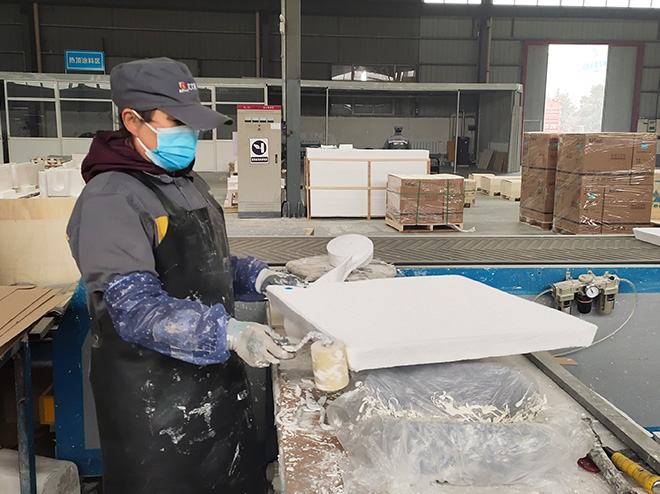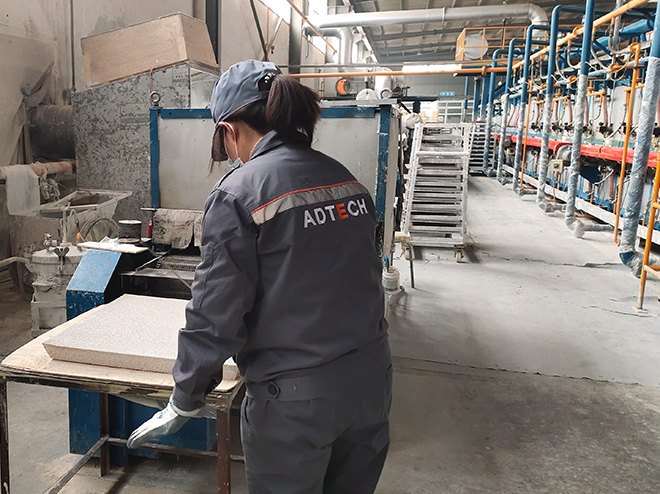In the manufacturing process of the ceramic foam filters, the open-cell polyurethane foam board with appropriate pore size is completely immersed in the mud bath, and the board is repeatedly compressed and expanded by a mechanical plunger device made of perforated steel plate, thereby impregnated with the ceramic slurry. This process lasts from 30 seconds to 1 minute or until the voids of the foam are substantially filled with slurry. The dipped foam board is then taken out of the slurry bath and transferred to the extrusion device.
In view of the thixotropy of the slurry, it is particularly advantageous to vibrate the slurry during the dipping process. Because of the high shear rate applied by vibration, the slurry can easily flow in a short time to fill the voids in the foam. Once the vibration stops, the slurry becomes difficult to flow, so there is little slurry discharged from the foam in the subsequent transfer operation.
Ceramic slurry is an aqueous slurry that contains a certain amount of water to help control viscosity, so that people can impregnate foam materials with the slurry, and it also allows people to use the slurry conveniently.
The aqueous ceramic slurry naturally depends on the ceramic filter required for the selected metal to be filtered. The final ceramic foam filter product must have sufficient performance to withstand the erosion of the specific molten metal and withstand the specific high temperature conditions used. In addition, the slurry should have high fluidity and should be composed of an aqueous suspension of ceramics for use in filters. Preferably, a mixture of aluminum oxide and chromium oxide is used. However, these materials can be used alone or in combination with other ceramic materials. In addition, other typical ceramic materials that can be used include zirconia, magnesia, titanium dioxide, silicon dioxide, and mixtures thereof.

Ceramic Foam Filters Manufacturing Process
In order to obtain a uniform product, the degree of discharge of excess slurry from the impregnated foam should be strictly controlled, and it should be uniform throughout the body. Conventional methods for removing slurries from organic foams used in manufacturing, such as extrusion, compressed air blowing, and centrifugation, do not always give satisfactory results in this regard. We have found that one or more passes of the impregnated foam through the rollers, and the gap between the rollers is set to be smaller than the thickness of the foam, is the best method.
When the newly rolled foam comes out of the rolling mill, it is also preferable to use a mobile output table to support it. Coating rolls and output stations contribute to the integrity, structural uniformity, and shape of the rolled product because they reduce the effects of unwanted deformation and minimize unnecessary processing that may interfere with the slurry distribution. By changing the nip setting in one pass operation, a high degree of control over the permeability and bulk density of the ceramic foam can be achieved.

